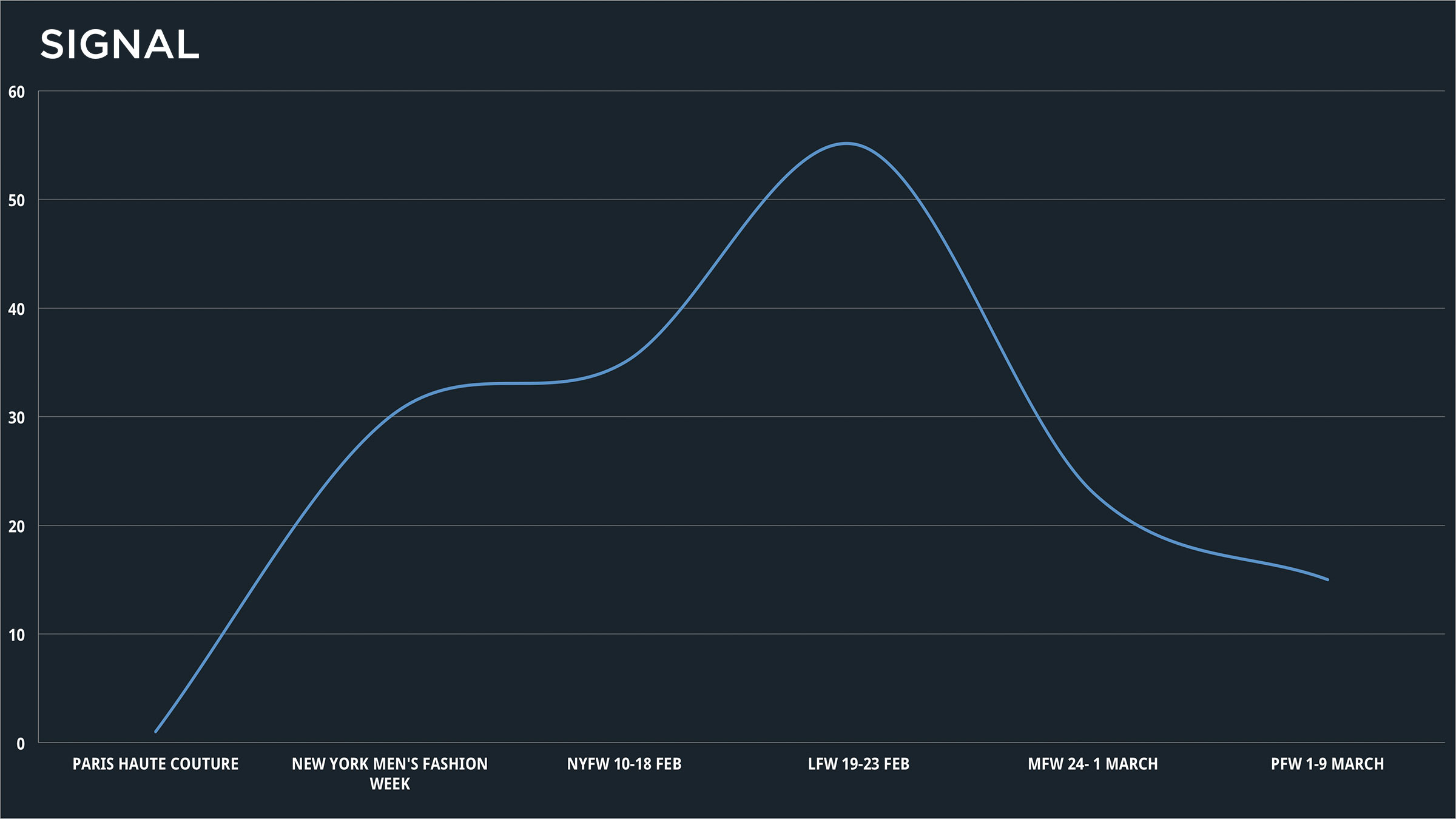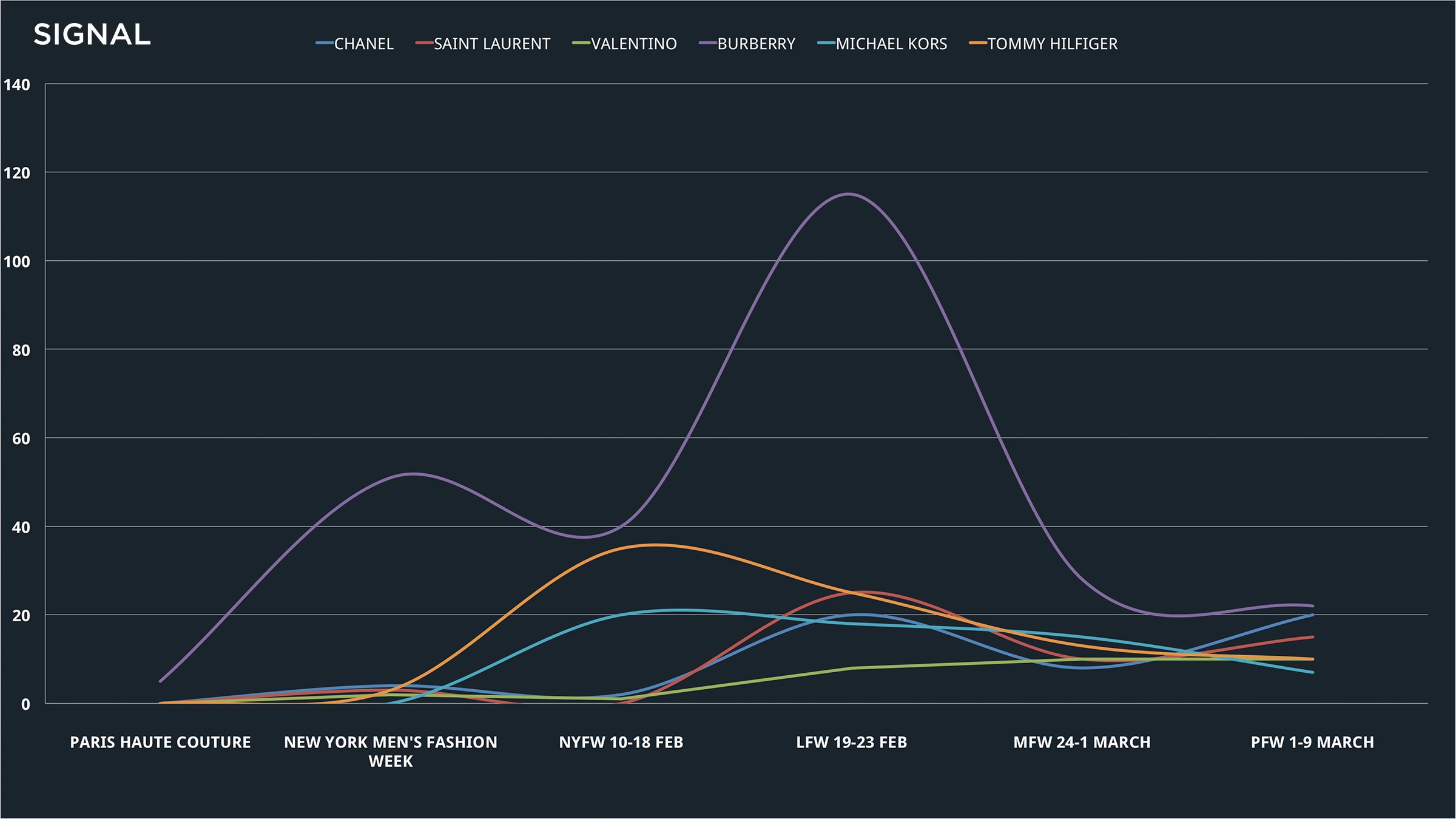Picture a fashion show and you probably imagine Anna Wintour in the front row. Ever since Ruth Finley established the Fashion Calendar in 1945, runway shows have brought together buyers, manufacturers, designers and editors to preview the next season’s collections. This year, however, the calendar has been turned on its head, with several labels setting their sights on a new target – the consumer – by choosing to show collections immediately available for purchase. Over the last few weeks, we’ve been analysing the reactions to this changing trend.
Adopters of the new direct-to-consumer approach generally fell within the New York and London Fashion Weeks, and included brands such as Burberry, Tory Burch, Tommy Hilfiger and Michael Kors. Traditional European luxury houses such as Chanel, Valentino and Yves Saint Laurent largely rejected the trend, though some such as Prada did incorporate some see-now, buy-now elements into their shows.
Within the industry, the change received a mixed response, with European luxury labels and industry bodies most vocally against the initiative. But in the context of relatively modest growth across the fashion sector – predicted to rise 3.4% annually until 2020 – it is hardly surprising that brands are looking at innovative ways to appeal to consumers and improve their performance. Therefore, with the help of media monitoring platform Signal Media, we set out to see whether an innovative approach translated into real results by considering the metric of media coverage.
Our research showed that the new direct-to-consumer trend dominated industry headlines throughout all four key shows this year, reflecting the mixed reaction.

Meanwhile, comparing a sample of brands that adopted the new approach with a sample of those that didn’t, it was clear that the innovators gained greater coverage in the media, as the graph below shows.

Most notable in the results of our research was the overwhelming level of coverage that Burberry secured throughout the season. Not only were they one of the pioneers in the direct-to-consumer trend, but they took it further by integrating the approach with their innovative digital strategy, launching live social media campaigns in line with their new collections. Of course, media coverage and buzz is just one metric and we will have to wait to see whether the bottom line impact will be notable for these brands.
Whatever the successes of the new trend, there is clearly a question mark about how enduring any benefits can be. For the most luxurious of fashion labels, the accessibility of a direct-to-consumer campaign and the exclusivity that those brands rely on do not naturally go hand-in-hand, so it is perhaps unsurprising that they have generally shunned the new approach this time around. Should the idea catch on, it will be just one other way the most exclusive labels struggle to grapple with the digital agenda in fashion.
On the other hand, many of the brands participating in the new trend are those with strong digital presences and innovative marketing campaigns that target the younger, more internet-savvy generation. And the need to increase sales in tech-obsessed China is undoubtedly a strong driver. But at the same time, the movement to align the runway with retail is the main tenet of fast-fashion, with many high-street companies spinning out hundreds of new items per week to stay competitive in a quickly-growing retail market, and modern luxury brands will be looking to be careful about maintaining a distinctive separation.
Ultimately the customer is what unites all of our clients at The MBS Group. While it may be that the runway-to-retail approach towards fashion week does not suit the customers of luxury houses such as Chanel and Dior, we are excited to see how other brands continue to find innovative ways to interact with theirs. Fashion Week serves a number of purposes across the sector, and we’re intrigued to see how it evolves in the coming years.







